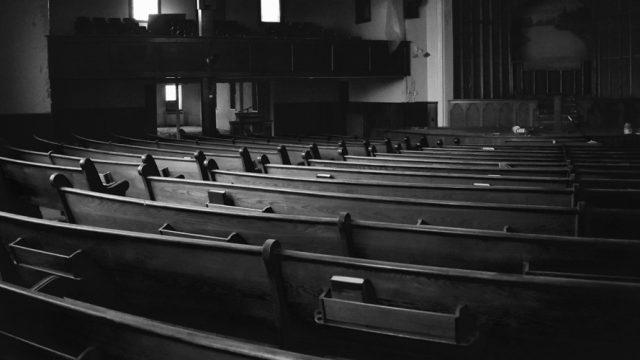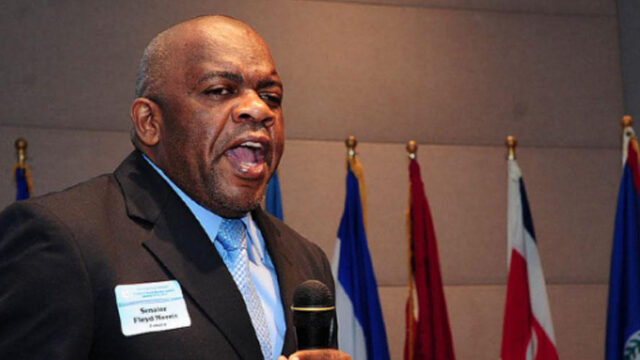The certainty of the Second Coming

It was one of the most devastating earthquakes ever to hit Armenia. On December 7, 1988, at 11:41 a.m. local time, the northern region of Armenia around Spitak was rocked by a major 6.8-Richter-scale-magnitude quake that destroyed towns, flattened houses, and cost the lives of more than 30,000 people. The story of a nameless father searching for his son in a destroyed school building has since inspired thousands.
Immediately following the initial quake, the father had rushed to the school, which had been totally flattened. Remembering a promise he had made long ago, he started digging, using his bare hands. “No matter what, I will always be there for you,” he had told his young son when his son felt afraid.
Determining the approximate location of his son’s schoolroom, he began moving rubble and concrete. Others arrived and, taking in the devastating destruction, attempted to pull him away. But he could not be distracted; he had made a promise. Firefighters and emergency personnel tried to restrain the father. Because of gas leaks, fires and explosions were a real danger. “We will take care of it,” they told him. “There’s no way your son could have survived this.”
The father kept on digging—one stone at a time. Finally, after 38 hours of digging, he suddenly heard his son’s voice. “Dad, is that you? I knew you were coming, Dad. I told the other kids not to worry, because you promised to come for me.” The man saved 14 children that day, including his son. He kept his promise.1
Another Wait
We’ve been waiting a long time since the angels asked the disciples: “Why do you stand here looking into the sky? This same Jesus, who has been taken from you into heaven, will come back in the same way you have seen him go into heaven” (Acts 1:11).2
Paul waited (Rom. 12:11-13; 1 Thess. 1:10); Peter waited (1 Peter 1:7-9; 4:7; 2 Peter 3:9-14); John waited (Rev. 22:12, 20); and millions of other followers of Jesus have since waited. Often those waiting for the Master’s glorious return found themselves imprisoned, persecuted, or ridiculed. At other times, lukewarmness threatened to slowly transform passionate disciples into popcorn-eating observers, more interested in the latest gadgets and fads than in the coming of their Lord. Waiting is not always easy.
Learning From Acts
The early Christian church, as portrayed in the Acts of the Apostles, provides a great example of how we can wait. Once the disciples stopped looking into the sky, they began to wait. As they waited, they began to pray (Acts 1:14). As they prayed, they moved closer together (Acts 2:1). Then it happened: prayerful expectation became Spirit-filled audacity. Revival led to a focus on mission that could not be contained. Peter’s testimony, translated by the Spirit to reach hearts, led to a multitude of conversions. Three thousand were baptized on that day, and that was just the beginning (verse 41).
Prayerful fellowship, taking care of the needs of the new community, and God-centered praise led to a growing church, because “the Lord added to their number daily” (verse 47). Timid, weary, worried people were transformed into mission-minded, bold, and compelling preachers of the Word. Persecution drove them to Samaria, Asia Minor, Rome—to the ends of the world. They waited and were passionate about preaching the risen Savior in a world in which the cross meant foolishness to most (1 Cor. 1:18).
Two key factors compelled the early church forward: First, they had been with Jesus. They spoke about a Savior they knew intimately. They had experienced God-with-us in person, and that experience transformed them.
Second, they were deeply rooted in Scripture and paid attention to prophecy. Peter’s sermon on Pentecost is full of quotes from the Old Testament. They had seen God’s timing in the arrival of the Messiah (Gal. 4:4), and they trusted His timing for the Son’s return.
Here is something we can learn from the early church: Like the disciples of old, we need to know our Savior personally and intimately. Grace cannot be communicated by hearsay. Salvation is not gained by blood bonds or membership forms. A personal encounter with the risen Lord is the foundation for trusting expectation. We trust people whom we truly know; and to truly know Jesus, we need to spend time with Him in prayerful conversation and study of His Word.
Another important facet of our waiting for Jesus involves understanding God’s prophetic message for our time.
Since the ending of the prophetic timelines in 1844, we are living in the time of the end. Daniel 9:24-27 helps us anchor the beginning of the long time period of 2,300 evenings and mornings (or days), given in Daniel 8:14, that had Daniel clearly worried. The 70 weeks that were “cut off” from the larger prophetic period began in 457 B.C., when the Medo-Persian king Artaxerxes I gave Ezra wide authority to “do whatever seems best with the rest of the silver and gold” (Ezra 7:18). This enabled Ezra to finally rebuild the city walls of Jerusalem, providing a clear link to Daniel 9:25 and the issuing of the decree to “restore and rebuild Jerusalem.”
Biblical prophecy is trustworthy. When the exact moment, foretold by prophets and seers, came, Jesus stepped into earth’s history and changed it forever. If God’s broad strokes of a prophetic timeline make sense and are reliable, how much more may we trust Him who said: “Look, I am coming soon!” (Rev. 22:12)?
How Soon Is Soon?
Early Adventists understood that God’s soon was truly soon. Their lives, their priorities, their hopes, focused on this most glorious moment in history. Soon Jesus would come to take home His redeemed. However, more than 170 years have passed since then.
“How soon is soon?” we ask ourselves as we wait. Yes, the signs of His coming are clearly visible and accumulative (Matt. 24): we can see this every time we turn on our TV, visit our favorite Facebook pages, or read the news about wars, natural catastrophes, hunger, disease, cruelty, lack of moral fiber and values, and social inequalities. When we look into the mirror, we may even see Laodicean complacency. Clearly this world is in crisis—morally, economically, socially, and ecologically.
Life cannot just go on forever. Our resources are limited; our problems seem unsolvable; our selfishness is limitless. Yet we have this hope that Christ alone imparts. Like the disciples, we live a life of active service as we wait. Like the disciples, we grab hold of the Master’s hand as we wait. Like the disciples, we are assured by the “prophetic message” that is “completely reliable” and will guide us like “a light shining in a dark place” (2 Peter 1:19).
Similar to Pentecost, we can see God’s Spirit at work all around us. The message of His soon return is transforming lives and making inroads in towns, inner cities, jungles, and on mountaintops. We wait and serve because that has been the modus operandi for God’s children since that day the disciples saw Jesus disappear into the clouds of heaven.
One prayer at a time God’s kingdom is enlarged. In the midst of this world’s pain and aches, even in the midst of our own pain, we wait patiently and trustingly. On that great day that will outshine all other days, we will run into the arms of our kingly Savior and tell him, “Jesus, we knew You were coming for us, because You told us so.”
1 Based on Jack Canfield and Mark Victor Hansen, eds., Chicken Soup for the Soul (Deerfield Beach, Fla.: HCI Books, 1993), pp. 273, 274.
2 All Bible texts are from the Holy Bible, New International Version. Copyright ã 1973, 1978, 1984, 2011 by Biblica, Inc. Used by permission. All rights reserved worldwide.








